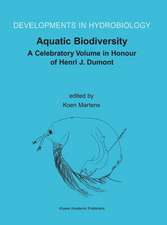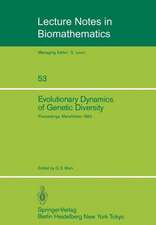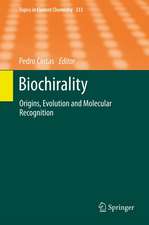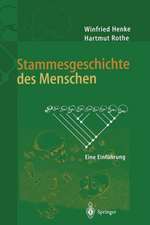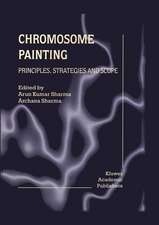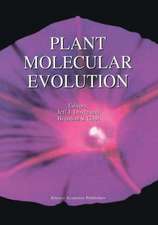Lost Sex: The Evolutionary Biology of Parthenogenesis
Editat de Isa Schön, Koen Martens, Peter van Dijken Limba Engleză Paperback – 29 noi 2014
The major theme of this book is: what is the fate of animal and plant groups in which sex is lost? Initial chapters discuss theory behind asexual life: what major disadvantages do asexual groups have to face, what are the genetic and ecological consequences and what does this theory predict for more applied aspects of asexual life, for example in agricultural pests, diseases as well as in cultural crops such as grapes. Cases studies in many animals (focusing on both invertebrates and vertebrates) and plants reveal parallel, but also singularly novel adaptations to the absence of meiosis and syngamy. And last but not least, are asexuals really doomed to early extinction or do genuine ancient asexuals exist?
This book assembles contributions from the most important research groups dealing with asexual evolution in eukaryotes. It is a milestone in research on parthenogenesis and will be useful to undergraduate as well as graduate students and to senior researchers in all fields of evolutionary biology, as the paradox of sex remains its queen of problems.
| Toate formatele și edițiile | Preț | Express |
|---|---|---|
| Paperback (1) | 1232.71 lei 6-8 săpt. | |
| SPRINGER NETHERLANDS – 29 noi 2014 | 1232.71 lei 6-8 săpt. | |
| Hardback (1) | 1237.80 lei 6-8 săpt. | |
| SPRINGER NETHERLANDS – 13 oct 2009 | 1237.80 lei 6-8 săpt. |
Preț: 1232.71 lei
Preț vechi: 1503.31 lei
-18% Nou
Puncte Express: 1849
Preț estimativ în valută:
235.91€ • 243.71$ • 196.34£
235.91€ • 243.71$ • 196.34£
Carte tipărită la comandă
Livrare economică 25 martie-08 aprilie
Preluare comenzi: 021 569.72.76
Specificații
ISBN-13: 9789400779969
ISBN-10: 9400779968
Pagini: 636
Ilustrații: XVII, 615 p.
Dimensiuni: 155 x 235 x 33 mm
Greutate: 0.88 kg
Ediția:2009
Editura: SPRINGER NETHERLANDS
Colecția Springer
Locul publicării:Dordrecht, Netherlands
ISBN-10: 9400779968
Pagini: 636
Ilustrații: XVII, 615 p.
Dimensiuni: 155 x 235 x 33 mm
Greutate: 0.88 kg
Ediția:2009
Editura: SPRINGER NETHERLANDS
Colecția Springer
Locul publicării:Dordrecht, Netherlands
Public țintă
ResearchCuprins
Asex and Evolution: A Very Large-Scale Overview.- The Evolution of the Problem of Sex.- Apomixis: Basics for Non-botanists.- Cytology of Asexual Animals.- A Graphical Approach to Lineage Selection Between Clonals and Sexuals.- Geographical Parthenogenesis: General Purpose Genotypes and Frozen Niche Variation.- Sex and the Red Queen.- Geographical Parthenogenesis: Opportunities for Asexuality.- The Elusive Clone – In Search of Its True Nature and Identity.- Asexual Speciation.- Darwinulid Ostracods: Ancient Asexual Scandals or Scandalous Gossip?.- Parthenogenesis in Oribatid Mites (Acari, Oribatida): Evolution Without Sex.- Bdelloid Rotifers: Progress in Understanding the Success of an Evolutionary Scandal.- Sex Loss in Monogonont Rotifers.- Cyclical Parthenogenesis in Daphnia: Sexual Versus Asexual Reproduction.- Metasexual Stick Insects: Model Pathways to Losing Sex and Bringing It Back.- Thelytoky in Hymenoptera with Venturia canescens and Leptopilina clavipes as Case Studies.- Sex in Parthenogenetic Planarians: Phylogenetic Relic or Evolutionary Resurrection?.- Sperm-Dependent Parthenogenesis and Hybridogenesis in Teleost Fishes.- Masked Damage: Mutational Load in Hemiclonal Water Frogs.- Lost Sex in the Reptiles: Constraints and Correlations.- An Apomixis-Gene’s View on Dandelions.- Allelic Sequence Divergence in the Apomictic Boechera holboellii Complex.- Asexual Reproduction in Infectious Diseases.- What’s in a Clone: The Rapid Evolution of Aphid Asexual Lineages in Relation to Geography, Host Plant Adaptation and Resistance to Pesticides.- Epigenetic Mechanisms in Mammals and Their Effects on Cloning Procedures.- Grapevine (Vitis ssp.): Example of Clonal Reproduction in Agricultural Important Plants.
Recenzii
From the reviews:
One important issue in the field of a sexual biology is the divergence between botanists and zoologists in language and, possibly, in conceptual understanding.(...)The editors and authors are to be applauded for their considerable efforts to bridge this divide. ...Lost Sex is praiseworthy for its conception and execution. The volume will appeal to both general readers and specialists... It should serve as an unrivaled resource for future studies on asexual organisms. SCIENCE, vol 328, April 2010
“Lost Sex is a wonderful reference work. Its target audience includes biology students and researchers at any level. Given its specialist textbook structure, it can only be recommended to laypeople with a modicum of background reading.” (Alejandra Manjarrez, Lab Times, Issue 1, February, 2011)
One important issue in the field of a sexual biology is the divergence between botanists and zoologists in language and, possibly, in conceptual understanding.(...)The editors and authors are to be applauded for their considerable efforts to bridge this divide. ...Lost Sex is praiseworthy for its conception and execution. The volume will appeal to both general readers and specialists... It should serve as an unrivaled resource for future studies on asexual organisms. SCIENCE, vol 328, April 2010
“Lost Sex is a wonderful reference work. Its target audience includes biology students and researchers at any level. Given its specialist textbook structure, it can only be recommended to laypeople with a modicum of background reading.” (Alejandra Manjarrez, Lab Times, Issue 1, February, 2011)
Textul de pe ultima copertă
Sex is the queen of problems in evolutionary biology. Generations of researchers have investigated one of the last remaining evolutionary paradoxes: why sex exists at all. Given that sexual reproduction is costly from an evolutionary point of view, one could wonder why not all animals and plants reproduce asexually. Dozens of contemporary hypotheses attempt to explain the prevalence of sex and its advantages and predict the early extinction of fully asexual lineages.
The major theme of this book is: what is the fate of animal and plant groups in which sex is lost? Initial chapters discuss theory behind asexual life: what major disadvantages do asexual groups have to face, what are the genetic and ecological consequences and what does this theory predict for more applied aspects of asexual life, for example in agricultural pests, diseases as well as in cultural crops such as grapes. Cases studies in many animals (focusing on both invertebrates and vertebrates) and plants reveal parallel, but also singularly novel adaptations to the absence of meiosis and syngamy. And last but not least, are asexuals really doomed to early extinction or do genuine ancient asexuals exist?
This book assembles contributions from the most important research groups dealing with asexual evolution in eukaryotes. It is a milestone in research on parthenogenesis and will be useful to undergraduate as well as graduate students and to senior researchers in all fields of evolutionary biology, as the paradox of sex remains its queen of problems.
The major theme of this book is: what is the fate of animal and plant groups in which sex is lost? Initial chapters discuss theory behind asexual life: what major disadvantages do asexual groups have to face, what are the genetic and ecological consequences and what does this theory predict for more applied aspects of asexual life, for example in agricultural pests, diseases as well as in cultural crops such as grapes. Cases studies in many animals (focusing on both invertebrates and vertebrates) and plants reveal parallel, but also singularly novel adaptations to the absence of meiosis and syngamy. And last but not least, are asexuals really doomed to early extinction or do genuine ancient asexuals exist?
This book assembles contributions from the most important research groups dealing with asexual evolution in eukaryotes. It is a milestone in research on parthenogenesis and will be useful to undergraduate as well as graduate students and to senior researchers in all fields of evolutionary biology, as the paradox of sex remains its queen of problems.
Caracteristici
First complete update of the field since 1982 Includes theory, case studies and applied aspects of parthenogenesis Deals with plants and both vertebrates and invertebrates Contributes to the debate on the paradox of sex from the asexual point of view Describes genetic and ecological consequences of asexuality










